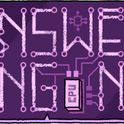How to strike the right balance in talking about the latest experiment in which a gene in a human embryo was edited? Should it be considered the first step on the road to tailored personal genomes, or a useful advance in what might one day be a valuable medical technique? Or just an incremental step in basic science?
This sort of editing of a genome would have been impossible before the advent in 2012-13 of the CRISPR-Cas9 technique, which uses a set of molecular machinery—basically a bacterial DNA-cleaving enzyme—to modify genes on DNA in a precisely targeted manner. So the result is certainly exciting. And because gene editing in human embryos has profound ethical as well as medical implications, it is controversial. Yet at the same time, the potential of doing such work was already apparent from previous experience with CRISPR, and we know very little at this stage about the implications of such a genetic change for the further development of the embryo. No one is talking yet about doing this in clinical medicine or human reproduction. So the furore over “designer babies,” while predictable, is out of proportion to what has been scientifically achieved here.
The new work was carried out by a team in the US, China and South Korea. It is not the first time that CRISPR has been used to genetically modify a human embryo—that was done in 2015 by researchers in China (see this piece)—but the involvement of teams within the more stringent regulatory and ethical regime of the US marks a significant step in acceptance of such experiments. The 2015 Chinese work was rejected by the two major science journals Nature and Science on ethical grounds, so it is notable that Nature has published the new paper. Nonetheless, it was only because the work had private funding in the US (where the main laboratory was at the Oregon Health and Science University in Portland) that it could sidestep government restrictions.
The researchers used IVF techniques to produce embryos from the sperm of a man carrying a mutant form of a gene called MYBPC3, which causes a rare and severe heart disease called hypertrophic cardiomyopathy (HCM). (Because, like most carriers, the man also had the healthy form of the gene—we have two copies of our genes, one inherited from each parent—he does not suffer from the often fatal condition, but is a carrier.)
"Chinese work in the same area was rejected by the two major science journals Nature and Science on ethical grounds"The team then injected the CRISPR-Cas9 system into the single-cell embryos (strictly, at this stage the fertilised egg is called a zygote), “programmed” to snip out the defective form of MYBPC3 and insert the healthy variant. Almost three-quarters of the resulting embryos, studied at the 4-8-cell stage of division, contained the replacement gen. Others either did not show the substitution at all or did so only in some of the cells, making them “mosaic embryos.” Such mosaicism is, the researchers say, one of the most serious safety issues for using these techniques clinically.
One potential concern is that the CRISPR system might also induce “off-target” mutations in the genome—with potentially serious, even lethal consequences. (Such errors might lead to termination of embryo growth at a very early stage, however.) The researchers found rather little of this, and none that was detectable in the “healthy” embryos. All the same, there’s no telling yet whether complications that might go undetected at this very early point in an embryo’s development, when all the cells are stem cells with the potential to develop into any tissue type, might emerge later as other genes get activated or deactivated when the cells start to become specialised into skin, heart, liver, bone and other tissues.
In short, the message is rather encouraging for the notion of using CRISPR to avoid some types of genetic diseases in human embryos. But the method is a long, long way from any kind of clinical use, and there are big questions still unanswered about its ultimate safety as a tool in human reproductive technology.
The possibility of using CRISPR gene editing to tackle genetic diseases with a very simple—often single-gene—origin, like HCM, is real and exciting, but the scope for it is limited. Such diseases are typically uncommon, although they can be very nasty. At present their risk can generally be identified because carriers of the associated gene variant tend to have family histories of the disease, and the risk of passing on the condition (if both parents are carriers) can be mitigated by genetic screening of embryos created by IVF. But it’s conceivable that “correcting,” rather than avoiding, the genetic condition could be useful in some cases—it could, for example, boost the number of healthy embryos suitable for re-implantation.
For more complex genetic conditions, involving the interactions of several or even hundreds of genes—such as some heart conditions and forms of diabetes—it’s far from clear that gene editing could be of any use. Besides, many, perhaps most, genes have biochemical roles that don’t translate into single, clearly defined functions at the level of traits in the whole organism, so tampering with a gene could have consequences that are subtle and hard to predict. Geneticists know this—they aren’t stumbling naively into unknown territory. This is true also for many traits beyond propensity to disease, especially ones relating to the kinds of desirable capacities discussed in terms of genetic enhancement and “designer babies”: intelligence, say, or athleticism or musical ability. Some gene variants, for example, have been linked with very small differences in intelligence as measured by IQ (a controversial issue in itself). Any idea of using gene editing to induce significant improvements in intelligence while avoiding any other side-effects is very likely to be sheer fantasy, and even those researching the relationships between genes and intelligence would say as much.
"Perhaps one of the most important lessons to be learnt here is that science reporting is not a neutral account of the facts"It’s no surprise that the new work spawned headlines about the “Dawn of the Designer Baby.” (Yes, that was the Daily Mail, which announced much the same “dawn” because of another biomedical advance seven years ago.) Gene-editing for human reproductive purposes is currently banned in most countries that have regulations on the matter at all, but nonetheless one story on the work in the reputable science magazine Technology Review produced at the Massachusetts Institute of Technology ended by saying that “Despite such barriers, the creation of a gene-edited person could be attempted at any moment, including by IVF clinics operating facilities in countries where there are no such legal restrictions.” Technically that is true—but no more so than the possibility of human reproductive cloning. Both would be unlikely to succeed, fraught with danger, and a clear violation of ethical principles.
As Brigitte Nerlich of Nottingham University, a specialist on the social narratives of science, points out, the reporting ran the gamut from sober and factual to alarmist and wildly speculative (sample: “When real life echoes science fiction: is this our ‘brave new world?’”). The ever-reliable Ed Yong, science reporter for The Atlantic, made a valiant effort to quell hysteria with an article titled “The Designer Baby era is not upon us.” No, it’s not.
Perhaps one of the most important lessons to be learnt here is that science reporting is not a neutral account of the facts, and that it matters as much where you source your scientific as your political news. This should be no surprise, but the supposed objectivity of science is too often imagined to translate into objectivity in science reporting.
Of course some outlets will always be sensationalist, both through lack of understanding and because sensation sells. What’s a little dispiriting, though, is the poverty of the sensationalist imagination. References to Brave New World, not to mention Frankenstein, have been put into service ever since the early days of IVF. Now it’s common for them to be supplemented with images of genetic social stratification as depicted in the 1997 film Gattaca. As Nerlich says, these allusions, “especially when used in a perfunctory way, might not stimulate the ethical debate that many call for; instead they might well distract from it. Germline editing is a difficult issue. We need to think about it seriously.”













